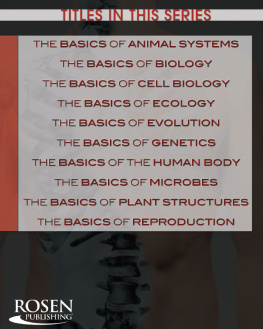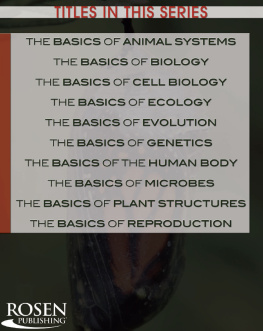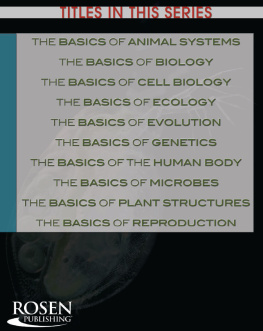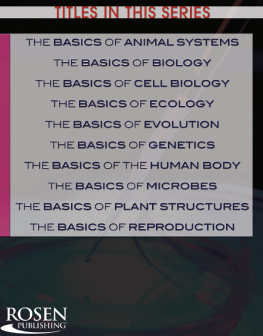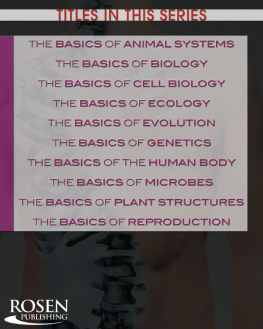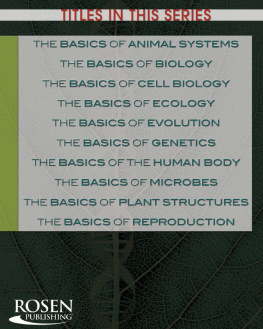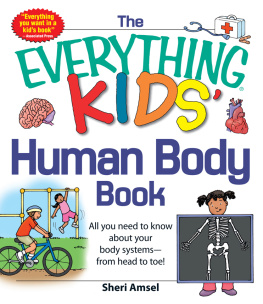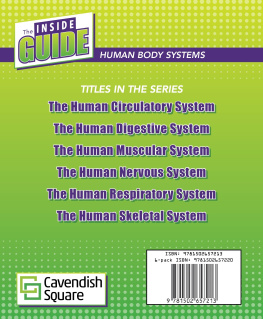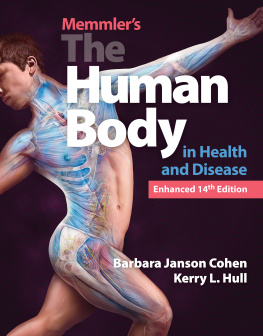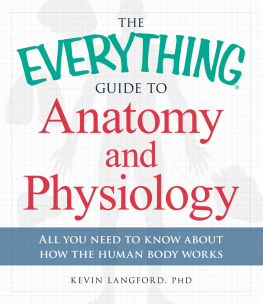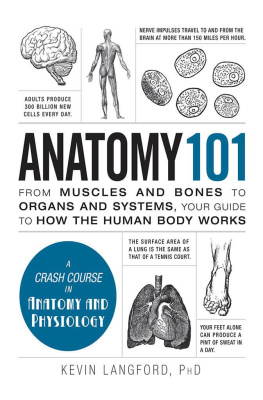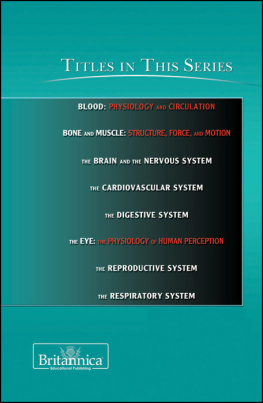This edition published in 2014 by:
The Rosen Publishing Group, Inc.
29 East 21st Street
New York, NY 10010
Additional end matter copyright 2014 by The Rosen Publishing Group, Inc.
All rights reserved. No part of this book may be reproduced in any form without permission in writing from the publisher, except by a reviewer.
Library of Congress Cataloging-in-Publication Data
Wanjie, Anne.
The basics of the human body/Anne Wanjie.1st ed.New York:
Rosen, c2014
p. cm.(Core concepts)
Includes bibliographical references and index.
ISBN 978-1-4777-0555-1 (library binding)
1. Human bodyJuvenile literature. I. Title.
QP37 .W36 2014
Manufactured in the United States of America
CPSIA Compliance Information: Batch #S13YA: For further information, contact Rosen Publishing, New York, New York, at 1-800-237-9932.
2004 Brown Bear Books Ltd.
CONTENTS
CHAPTER 1: THE BODYS ORGANS AND SYSTEMS
CHAPTER 2: THE DIGESTIVE SYSTEM
CHAPTER 3: THE CIRCULATORY SYSTEM
CHAPTER 4: THE RESPIRATORY SYSTEM
CHAPTER 5: THE SKELETOMUSCULAR SYSTEM
CHAPTER 6: THE CENTRAL AND PERIPHERAL NERVOUS SYSTEMS
CHAPTER 7: THE SENSORY SYSTEM
CHAPTER 8: THE IMMUNE SYSTEM
CHAPTER 9: BIOGRAPHY: WILLIAM HARVEY
GLOSSARY
FOR MORE INFORMATION
FOR FURTHER READING
INDEX
CHAPTER ONE
THE BODYS ORGANS AND SYSTEMS
Your body is made up of interconnected groups of organs and tissues that keep you alive, healthy, and working correctly. They are called the bodys systems.
THE HUMAN BODY
T he human bodys systems begin to develop very early in life. An unborn baby starts off as just a single cell called a zygote. After the egg is fertilized by a sperm, it splits into two identical cells. These two cells each divide again to make four cells, and then they divide to make eight cells, and so on over and over again.
At first all the new cells are identical, but soon different kinds of cells start to appear. These cells form themselves into different types of tissues, which then develop into bone, muscle, and organs such as the heart and liver. The tissues and organs make up the basic parts of the bodys systems. For example, organs such as the stomach and gut are part of the digestive system.
GREEK ANATOMY
Until the 16th century most of the Western worlds knowledge of human anatomy (the structure of the body and its systems) was based on the writings of the physician Claudius Galen (130201 CE). Galen was born in Greece but worked in Rome, where he tried to figure out how the human body works by studying the insides of dead apes and pigs. Many of Galens books about anatomy and medicine became the main source of information for medical students for more than a thousand years.
LEARNING FROM THE DEAD
The ancient Egyptians knew about the insides of the human body from the way they prepared their dead for burial, although their conclusions were not always correct. They removed the internal organs, stuffed the body with herbs and spices, and then soaked it in chemicals. This treatment mummified (preserved) the body by drying it so that it would not rot. The internal organs, sealed in separate jars of preserving spices, were placed in the tomb alongside the body.
A mural depicts ancient Egyptian purification and burial practices as the body is prepared to be placed in its tomb.
TWO TYPES OF SYSTEMS
There are 10 systems in the human body. Six of them are called the major systems not because they are more important than the others but because they extend through the whole body. The major systems are the skeletal system, the muscular system, the circulatory system (the heart and blood vessels), the nervous system (the brain, spinal cord, and nerves), the integumentary system (the skin, hair, nails, and sweat glands), and the immune system (the cells in the blood that fight infection).
The other four systemscalled the minor systemsare those inside the main body cavity, the chest and abdomen. The digestive system includes the mouth, stomach, liver, and intestines. It converts food into energy and nutrients such as amino acids and sugars. The main part of the respiratory system is the lungs, which absorb oxygen from the air when you breathe in and expel carbon dioxide gas when you breathe out. The excretory system includes the kidneys; the reproductive system includes the reproductive organs; and the endocrine system produces hormones (chemicals that help control all the other systems). Some organs are part of more than one of the bodys systems. The pancreas, for example, is part of the digestive and endocrine systems.
THE HEART OF THE MATTER
Flemish anatomist Andreas Vesalius (1514 1564) was one of the first scientists to study human anatomy by examining peoples bodies. In 1543 he published a book called On the Fabric of the Human Body. This book caused an outcry because it questioned the works of Galen, still the basis of medical science at that time. But it inspired researchers all over Europe to take a fresh interest in anatomy, and their work eventually led to the downfall of Galens theories.
The last of Galens ideas to bite the dust was about blood circulation. Galen thought that blood was produced by the liver and pumped around the body by the opening and closing of the blood vessels (the arteries and veins). The heart was where the blood mixed with air from the lungs. Until the 17th century most physicians accepted this theory. Then in 1628 the English physician William Harvey (15781657) published his discovery that the heart pumps blood out through the arteries, and the blood returns to the heart through the veins.
Andreas Vesalius published his findings about human anatomy in the 16th century.
The English physician William Harvey explains the circulation of blood to King Charles I in the 17th century.
HOMEOSTASIS
As well as doing their own jobs, systems work together to control the physical and chemical conditions inside the body. This process, called homeostasis, includes keeping the body at the correct temperature, around 98.6F (37.0C). Sweating cools the body, and shivering is a warming mechanism. Other organs involved include the liver and pancreas, which control the concentration of sugar in the blood, and the kidneys, which control the bodys water and salt content.
SECRETS OF THE STOMACH
In 1822 a French Canadian named Alexis St. Martin was accidentally shot in the side, and the U.S. Army surgeon William Beaumont (17851853) treated him. The wound healed, but it left St. Martin with a permanent hole in his side that connected directly to his stomach. Beaumont realized that this was a chance to study how the stomach digests food. He tied pieces of meat, bread, and cabbage to the ends of silk strings and put them into St. Martins stomach. A few hours later he pulled them out to see what had happened to them. In 1833 Beaumont published a description of how digestion works in the stomach.

